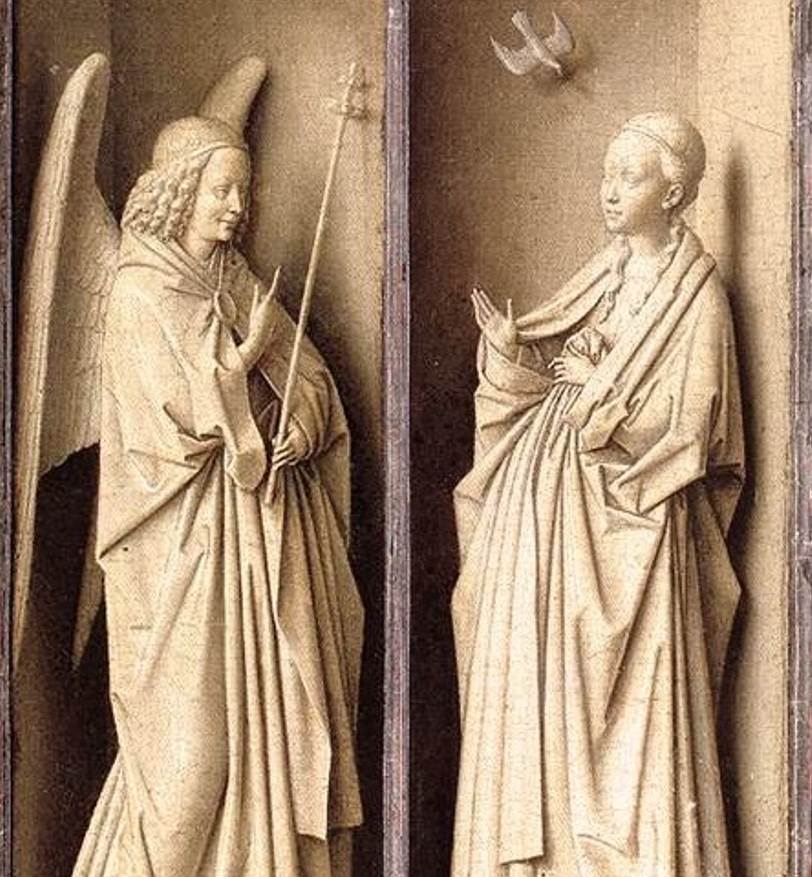One of the smallest, yet delicate paintings in the oeuvre of Renowned Flemish Early-Netherlandish painter Jan van Eyck consists of more than just one panel and features a remarkable surprise as well.
In this article, we’ll take a closer look at some of the most interesting facts about the Dresden Triptych by van Eyck, a fascinating work of art that was painted nearly 6 centuries ago.
1. It features 5 paintings even though it’s referred to as a triptych
A triptych is an artwork featuring 3 panels, usually hinged together. What’s remarkable about the Dresden Triptych, a work completed in 1437, is that even though it consists of 3 panels, it actually features 5 different paintings.
The 3 main paintings are visible when the panels are opened up, the 2 outer paintings only become visible when the painting is closed. This is similar to van Eyck’s most famous work, the Ghent altarpiece, which features 8 paintings on the outside and 12 paintings inside.
The central painting of the inner panels features the Virgin Mary and the Child Jesus Christ. On the left, we can see the Archangel Gabriel with a kneeling man, presumably the donor of the painting, and on the right, we can see Catherine of Alexandria, a Christian saint who was martyred in the early 4th century.
The outer panels depict the Virgin Mary and the Archangel Gabriel in an Annunciation scene, similar to the Annunciation of van Eyck which he painted a few years before completing this work.
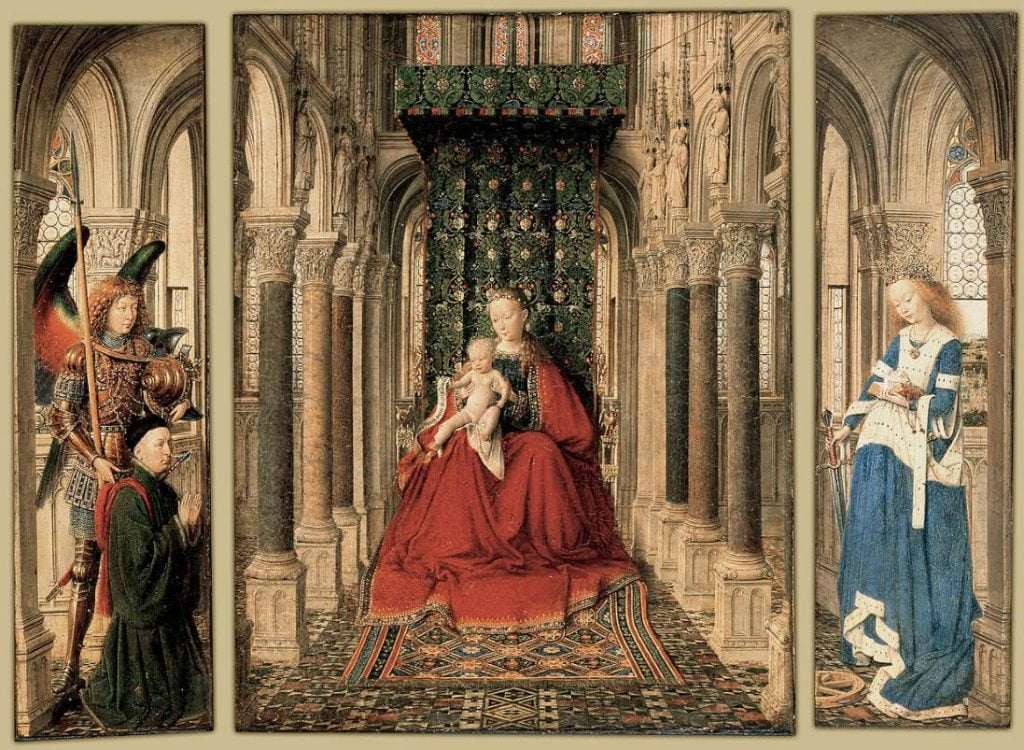
2. It’s one of the smallest Jan van Eyck paintings
While the Ghent Altarpiece is a massive work of art with dimensions of 3.5 x 4.6 meters (11.48 x 15.09 feet), the Dresden Triptych is a very small work of art.
It has dimensions of just 33.1 × 27.5 centimeters (1.08 x 0.90 feet), all panels included when opened up. This most probably means that it was intended to be a work that could easily be brought along with whoever commissioned it.
A portable artwork of religious nature such as this triptych is referred to as an “altare portable.”
3. The donor of the painting can be seen kneeling in the left panel
Little is known about who actually commissioned the work. Even though we don’t know his name, we can actually see how the man looked like because it’s assumed that the donor is the man sitting on the left.
This is a very similar position to other famous donors of Jan van Eyck paintings such as the “Madonna of Chancellor Rolin” (1435) and the “Virgin and Child with Canon van der Paele” (1434-1436).
Unlike in the other paintings, in which the donor is prominently displayed, this one appears at quite some distance from the Virgin Mary and on a much smaller scale.
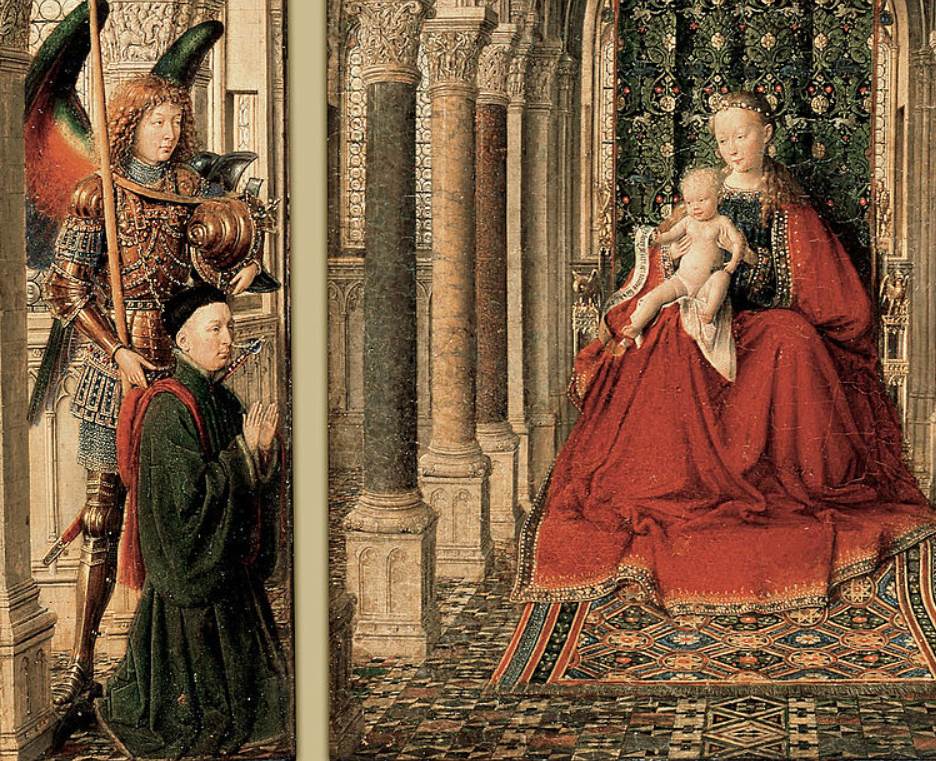
4. The donor was most probably an Italian merchant
So who is the man kneeling in the left panel of the Dresden Triptych?
Unfortunately, the only thing we can do is speculate because there are no records as to who commissioned this remarkable work of art. The painting, however, does still reside inside its original frame.
The coats of arms on this frame have been identified as those of the Giustiniani family of Genoa, which means that the man in question might be an Italian.
A technical analysis, however, has confirmed that this coat of arms was painted on at a later time in the 15th century. This was done on top of an original emblem of which the identity is unknown.
Either way, this still links the donor to Italy, especially since many Italian traders established themselves in Bruges, one of the wealthiest cities in Europe at the time. This is evidenced by an earlier work by van Eyck called the “Arnolfini Portrait” which was commissioned by a rich Italian merchant.
5. The name of the painting refers to its current location
Even though this painting is known as the “Dresden Triptych,” it’s also sometimes referred to as “Virgin and Child with St. Michael and St. Catherine and a Donor” or “Triptych of the Virgin and Child.”
The common name of the painting refers to the location of the painting today, which is the Gemäldegalerie Alte Meister, a museum of fine art in the German city of Dresden.
It came into the collection of this renowned museum after changing hands quite a few times in Italy, England, and France. It was first mentioned in the Dresden collection in 1754 and is still on public display at this amazing museum today.
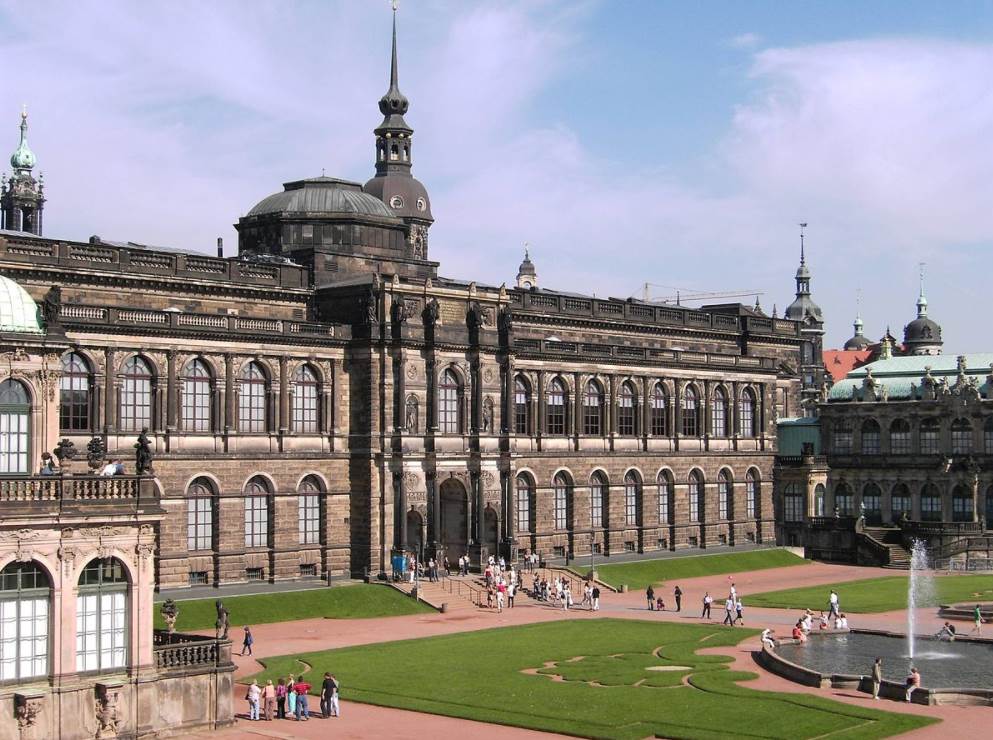
More interesting facts about the Dresden Triptych by van Eyck
6. Even though little is known about the donor of the painting, we know exactly when it was completed because it was signed by Jan van Eyck. he did so in his typical style as the painting’s signature reads: “IOHANNIS DE EYCK ME FECIT ET C[OM]PLEVIT ANNO D[OMINI] MCCCCXXXVII.ALC IXH XAN.”
This literally translates to: “Jan Van Eyck Made And Completed Me In The Year 1437. As I Can.”
7. Remarkably, this signature was only discovered during a restoration project in 1959 during which the frame was removed. Before it became clear that the work was completed in 1437 it was dated to the early 1420s.
When the painting entered the Dresden collection in 1757 it was even attributed to German painter Albrecht Dürer (1471-1528). This was followed by van Eyck’s brother Hubert before finally being attributed to Jan himself.
8. Even though the painting is so small, the level of detail that van Eyck included is astonishing. This can especially be seen in the landscape behind Saint Catherine in the right panel.
This landscape depicts several accurately depicted buildings followed by snow-capped mountains, quite astonishing because this was painted at such a small scale.
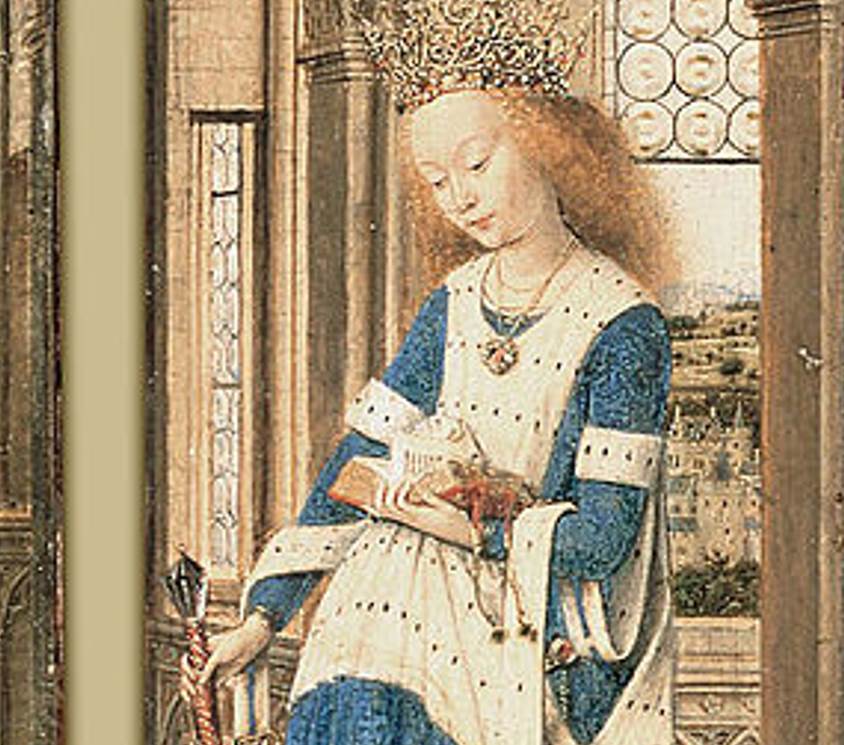
9. The central part of the painting is remarkable because it clearly shows the advanced technique used by van Eyck to depict the sense of space. He also placed the Virgin at the back of the building to accentuate the sense of depth.
The painting features rows of columns and architectural designs in both the Romanesque and Gothic styles. This is a fictive setting because it features sculptures of a secular nature, something that would have never been placed inside a church or religious building at the time.
10. One of the main reasons why we can assume that the donor wasn’t a member of the clergy but most probably a merchant is that he is holding his hands upwards. This emphasizes the fact that he is simply surprised rather than in prayer.
Just above the head of the donor, we can also see a pillar that appears to have markings of military nature. They probably depict events from the donor’s life, but because we don’t know his identity, we can’t know for sure what they represent.
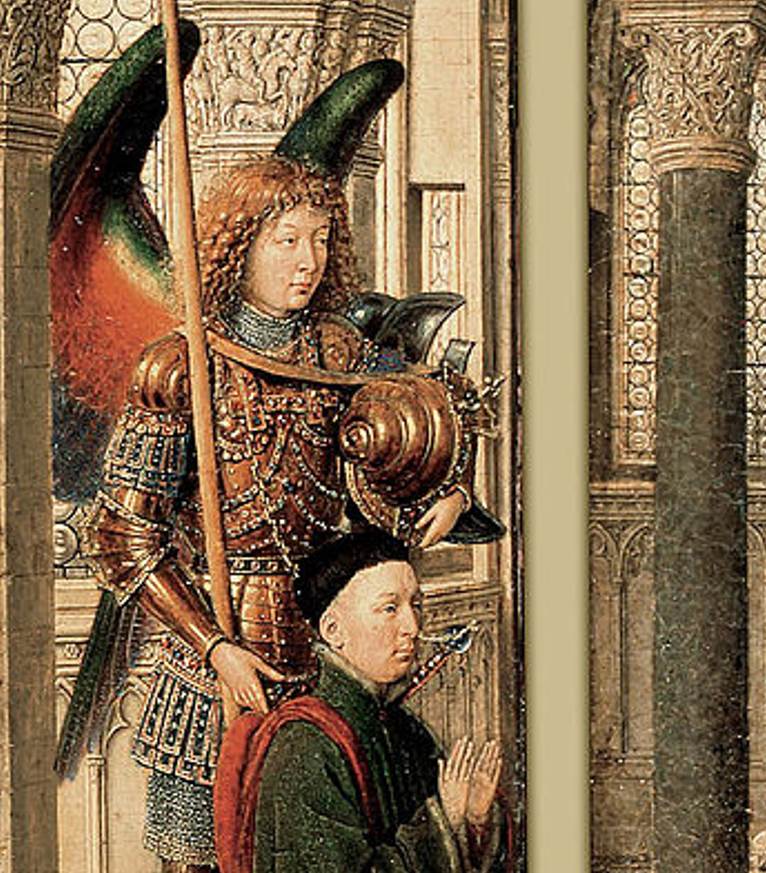
11. The original frames of the painting are elaborately decorated and originally featured grey and yellow colors. These were later overpainted in black and red, the colors of the coat of arms of the Genoese Giustiniani family.
Generally, the painting is in quite a bad shape, but what else can we expect from a work of art that is nearly 600 years old, right? It has been restored several times over the centuries as well, especially the area of Mary’s dress which was completely repainted in the 1840s.
12. So how do the outer panels of the Dresden Triptych look like?
Well, apart from the fact that they were painted using solely grey pigments, a painting technique referred to as “Gisaille,” they depict the Virgin Mary and Archangel Gabriel as he announces that she will give birth to the Son of God.
What’s remarkable about the outer panels of the triptych is that these were painted in such a way that they almost appear to be sculpted, a remarkable painting technique used by one of the most renowned Renaissance artists in history!
